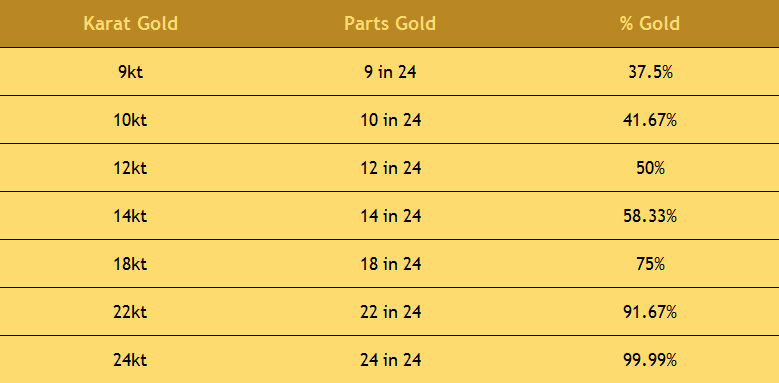What’s a Karat?
Have you ever wondered what the difference was between 24 karat, 22 karat and 18 karat gold? We all know what carat measures when it comes to diamonds, but what about gold? Is it better to have 12 or 24 karats? Learn more about the fineness of gold and how its value is judged. Read on to find out what karats measure when it comes to gold and why you should care.

The Different Karats of Gold
Karat is the term used to measure the gold content or purity. Before we understand the difference between 24k, 22k and 18k gold, you must know what karat stands for. Karat is basically a unit used to measure the purity of gold. The higher the karatage, the purer the gold. Here’s a simple guide to understanding the difference between 24k, 22k and 18k gold.
24K Gold
24k gold is also called pure gold or 100 per cent gold. This means that all 24 parts in the gold are all pure gold without traces of any other metals. It is known to be 99.9 per cent pure and takes on a distinct bright yellow color. There is no higher form of gold than 24K and you must be aware of this before you go to a dealer who might tell you that they’re selling you 25K or 26K gold. Since this is the purest form of gold, it is naturally more expensive than 22K or 18K gold. However, this type of gold is lesser in density as compared to gold of a lower karatage which makes it soft and pliable. Hence, it is not suited for regular forms of jewellery. Coins and bars are mostly bought of 24K gold purity. 24K gold is also used in electronics and medical devices such as those used for children suffering from ear infections who are fitted with gold tympanostomy tubes that are known to improve aeration of the middle ear.
